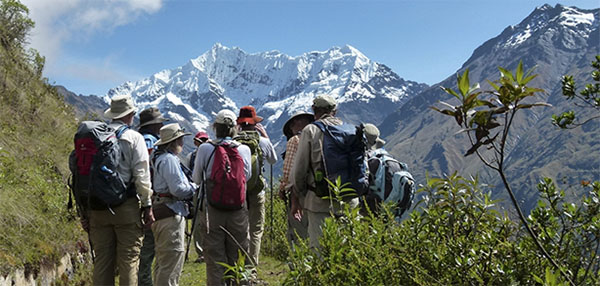Debemos saber que los Incas construyeron al menos 23,000 kilómetros de
caminos en toda su historia, pero la trayectoria que más resalta a la
hora de hacer turismo, es el camino Inca a Machu Picchu.
En mayor o menor cantidad, todos los caminos incas van dirigidos hacia
templos o localidades conservadas en el tiempo, algunas con monumentos y
otras simplemente con muestras de la cultura Inca. Sin embargo
hablaremos sobre que ver en el camino Inca a Machu Picchu, invitándote a leer sobre ecoturismo en el camino Inca.
Atracciones en el camino Inca
- Atracciones naturales
Cuando comenzamos con el recorrido del
camino inca debemos tener en cuenta que las temperaturas no sobrepasan
los 18ºC durante el recorrido, con lo cual deberás prever de la
vestimenta adecuada para la caminata, ya que serán varias horas de
recorrido hasta la ciudadela de Machu picchu. Tener en
cuenta que la mayor parte del terreno está acompañado de abismos,
pasajes creados por accidentes naturales y pendientes que pondrán a
prueba tu sentido de aventura. Para que te hagas una idea del recorrido,
el paisaje por lo general está adornado abundante vegetación formando
bosques, valles, montañas, algunos glaciales y ríos, por se recomienda
no alejarse del camino y mucho menos explorar estas zonas sin los
permisos pertinentes o guías profesionales ya que son áreas muy extensas
de selva, donde te podrías perder.
Con respecto a la fauna que podrás
encontrar durante el recorrido, te diremos que al menos 2000 especies
viven alrededor del camino Inca, algunas especies solo viven en estas
montañas y en otros lugares del mundo ya han quedado extintas, por lo
tanto captarlas en fotografía ya es una aventura en el recorrido. En
cuanto a la flora es indescriptible la cantidad de especies cerca del
camino y lo que nuestros ojos alcanzan a notar.
- Atracciones artificiales
Desde luego la arqueología es la
principal atracción creada por los antiguos Incas del Perú. Por el
camino inca además de llegar a los principales lugares turísticos,
podremos arribar durante el camino a pequeños pueblos y monumentos que
nos muestran el poder cultural de los antiguos Incas, entre otras
creaciones como zonas agrícolas, muros e ingeniería hidráulica que son
dignas de admirar y que se pueden ver a lo largo del recorrido.
Una vez que estemos cerca a Machu Picchu, podremos ver algunos hoteles
ubicados cerca y en donde podremos descasar si deseas pasar la noche
antes de continuar a la ciudadela inca. Esta zona donde se encuentran
los hoteles es conocida como Aguas Calientes, la cual es un pequeño pueblo previo a Machu picchu, el mismo que ofrece alojamiento, restaurantes y baños termales para al menos 30 mil personas que hacen el recorrido por el camino inca, cada el año.



















